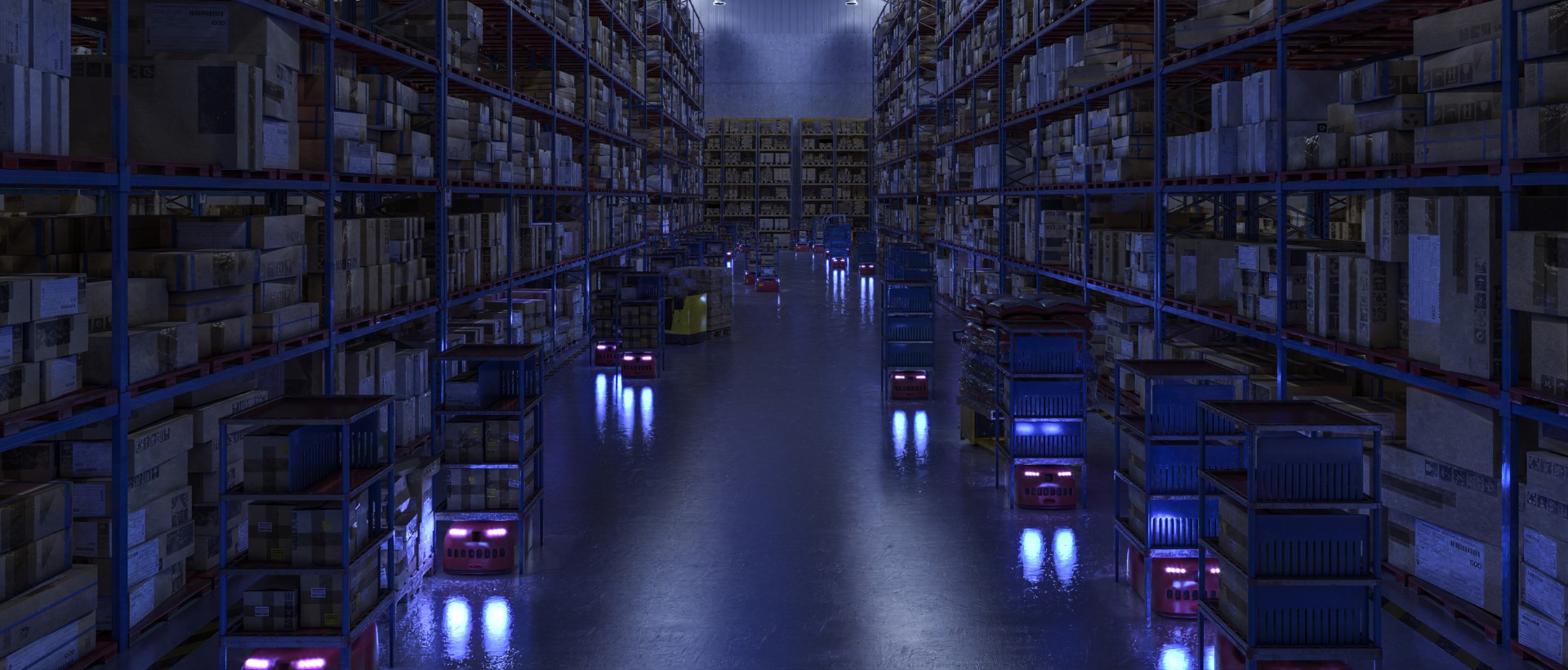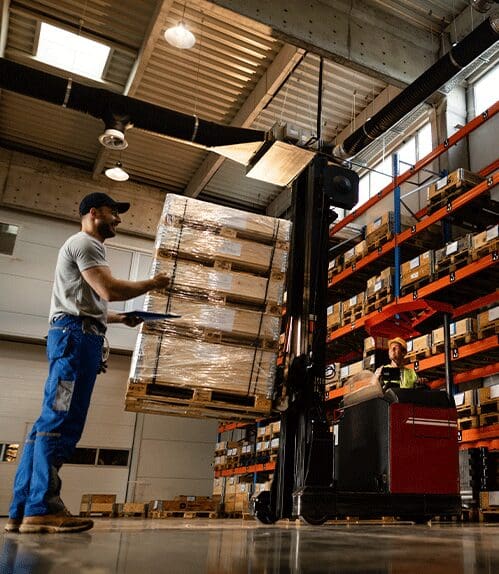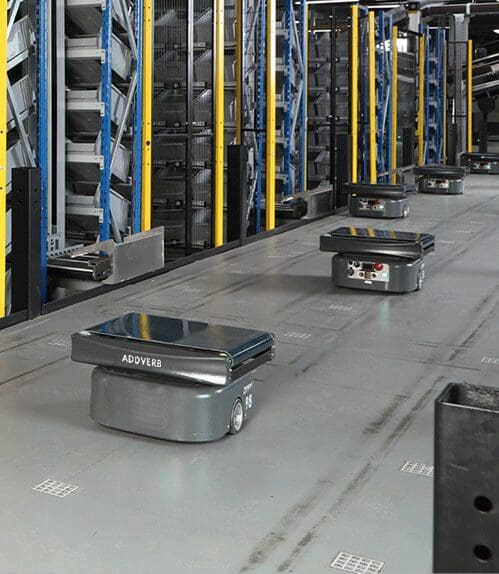Table of Contents
In the ever-evolving landscape of logistics and supply chain management, the concept of “Dark Warehousing” is rapidly gaining traction. As businesses seek to streamline operations, reduce costs, and enhance efficiency, dark warehousing emerges as a revolutionary approach. This blog explores what dark warehousing is, its benefits, and how it is shaping the future of warehousing.
What is Dark Warehousing?
Dark warehousing refers to a fully automated warehouse that operates with minimal to no human intervention. These warehouses are designed to function in low-light or even completely dark environments, hence the term “dark.” The reliance on advanced technologies such as Autonomous Mobile Robots (AMRs), Automated Storage and Retrieval Systems (ASRS), and sophisticated software solutions enables these facilities to run seamlessly without the need for traditional lighting or human presence.
Key Technologies Driving Dark Warehousing
Autonomous Mobile Robots (AMRs): AMRs are the backbone of dark warehousing. They efficiently move semi-finished and finished goods materials to various machines and storage systems, ensuring smooth and continuous operations. These robots can navigate complex warehouse layouts, avoid obstacles, and optimize routes in real-time, significantly improving productivity.
Automated Storage and Retrieval Systems (ASRS): ASRS solutions, particularly those with vertical height capabilities and cranes, play a crucial role in the temporary storage of semi-finished goods (SFG) and finished goods (FG). These systems maximize space utilization, reduce retrieval times, and ensure accurate inventory management.
Advanced Software Solutions: The integration of sophisticated software platforms, like those offered by companies such as Addverb, is essential for managing and coordinating the various automated systems within a dark warehouse. These platforms provide real-time data analytics, inventory tracking, and operational control, enhancing overall efficiency and decision-making.
Benefits of Dark Warehousing
Increased Efficiency and Productivity: Automation eliminates human errors and reduces the time required for manual tasks. AMRs and ASRS work around the clock without breaks, ensuring continuous operations and higher throughput.
Cost Reduction: With minimal human involvement, labor costs are significantly reduced. Additionally, the need for lighting and climate control can be minimized, leading to energy savings.
Enhanced Accuracy: Automated systems ensure precise inventory management and order fulfillment, reducing discrepancies and improving customer satisfaction.
Scalability: Dark warehouses can be easily scaled to meet increasing demand. The modular nature of AMRs and ASRS allows for quick and flexible expansion without major disruptions.
Safety: Automation reduces the risk of workplace accidents and injuries, creating a safer environment for any necessary human intervention.
READ MORE: 3 Reasons why Dark Warehouse is the future?
The Future of Dark Warehousing
As technology continues to advance, dark warehousing is set to become a standard in the logistics industry. The integration of artificial intelligence, machine learning, and the Internet of Things (IoT) will further enhance the capabilities of these warehouses, enabling predictive maintenance, real-time monitoring, and advanced data analytics.
Moreover, the push for sustainability is driving the adoption of energy-efficient and eco-friendly solutions within dark warehouses. Solar power, energy-efficient robotics, and smart building technologies will play a vital role in creating greener and more sustainable warehouse operations.
Conclusion
Dark warehousing represents a significant leap forward in the quest for efficiency and automation in the logistics sector. By leveraging cutting-edge technologies and innovative software solutions, businesses can achieve unparalleled levels of productivity, accuracy, and cost savings. As the industry continues to evolve, embracing dark warehousing will be essential for staying competitive and meeting the demands of a rapidly changing market.
FAQ
What is dark warehousing?
Dark warehousing is a fully automated warehouse operating with minimal to no human intervention, often in low-light or completely dark environments.
Why is it called “dark warehousing”?
The term comes from the ability to operate without traditional lighting, as human presence is minimal.
How does dark warehouses increase efficiency?
Automation reduces errors and manual tasks, allowing 24/7 operation and higher throughput.
How is accuracy enhanced?
Automated systems ensure precise inventory management and order fulfilment.
Is dark warehousing scalable?
Yes, the modular nature of AMRs and ASRS allows for quick and flexible expansion.
How does it improve safety?
Automation minimizes human interaction with hazardous tasks, reducing workplace accidents.
What environmental benefits exist?
Reduced energy consumption and the use of energy-efficient robotics contribute to sustainability.
What is the future of dark warehouses?
Integration of AI, machine learning, and IoT will enable predictive maintenance, real-time monitoring, and advanced data analytics. Sustainability will also be a key focus.
Founded in 2016, Addverb offers complete robotics solutions for warehouse and industrial automation, with a strong global presence through its subsidiaries worldwide. The company provides a range of in-house automation products, including Autonomous Mobile Robots, ASRS, and sorting technologies. It serves over 350+ clients, including well-known companies such as Coca-Cola, Amazon, and DHL.






